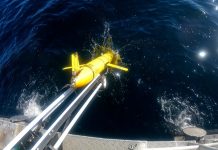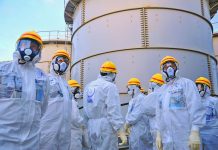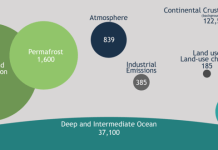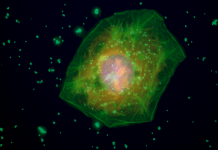James Webb Space Telescope (JWST) will specialise exclusively in infrared astronomy to study early universe. It will search for optical/infrared signals from the early stars and galaxies formed in the Universe soon after the Big Bang for a better understanding of the formation and evolution of galaxies and the formation of stars and planetary systems. JWST will also study planetary systems and the origins of life. The much-awaited JWST is now scheduled to be launched on 18 December 2021.
Usually, one focusses a telescope at a target to observe. But at times you deliberately focus on nothing and that change the course of a field of study. Decision to focus Hubble space telescope on nothing in the hitherto unexplored fields in the sky was one such incident that changed the course of astronomy.
Among many landmark accomplishments of Hubble Space Telescope (HST), the deep field images taken over the course of 10 days in 1995 when it captured about 3000 images of galaxies at different stages of stellar evolution has revolutionised astronomy and changed our understanding of the universe.
These deep field images were formed by the light that had travelled from the remotest locations of the universe for billions of light years through the expanding universe and had reached Earth now to be captured by the Hubble telescope after originally emanating from the early stars and galaxies formed soon after Big Bang about 13 billion years ago. So, as such deep field images denoted early stars and galaxies as they were then billions of years ago. This was truly remarkable feat.
But, this technique of capturing primordial optical signals for developing understanding of early universe could not be an effective methodological tool due to the fact discovered in 1929 by Edwin Hubble that the universe is expanding and all galaxies are moving away from each other as evidenced by the redshift of galaxy’s spectrum to higher wavelengths in infrared (IR) region. But the Hubble telescope is equipped to observe in UV, visible and near-infrared region hence the need for an exclusive infrared observatory in space.
The James Webb Space Telescope (JWST) is thus a successor to the Hubble space telescope (HST) in the sense that the James Webb telescope aims to carry forward the Hubble telescope’s legacy in the area of study of early universe. JWST will operate exclusively in infrared astronomy and has following four key goals:
For these reasons, JWST needed to be different from Hubble telescope in design and operation. It is a reflecting telescope designed to capture near-infrared radiations from ultra-deep fields with a large origami-style mirror that makes it 100 times more powerful than Hubble. In fact, JWST is the largest space telescope ever. To maintain its unprecedented infrared sensitivity, JWST has protection from infrared contamination from sun through a highly effective 5-layer sunshield. Further, to help maintain its very low operating temperature of 50 Kelvin (-223° C or -370° F), JWST will be placed in an orbit around the sun in the cold shadow of Earth all the time near the second Lagrange point (L2) of the Earth-Sun system at a distance of about 1.5 million km from Earth.
The placement of JWST near far off Sun-Earth system L2 orbit means, unlike Hubble telescope which received several repairs and maintenance in the space, JWST will be completely on its own after launch therefore there is no scope of any error at all. Perhaps this explains why launch of JWST is almost eternally delayed.
Now, JWST is planned to be launched on 18 December 2021.
As on 02 November 2021, JWST has already safely arrived at its launch site in French Guiana and the technical team is preparing for lift off on 18 December.
***
Sources:
- NASA 2021. Webb telescope – The Road to Launch and Beyond for NASA’s James Webb Space Telescope. Posted 02 November 2021. Available online at https://www.nasa.gov/feature/goddard/2021/the-road-to-launch-and-beyond-for-nasa-s-james-webb-space-telescope
- NASA. JWST – General Questions About Webb. Available online at https://www.jwst.nasa.gov/content/about/faqs/faq.html
- NASA. JWST – Key facts. Available online at https://jwst.nasa.gov/content/features/keyFactsInternational/
- ESA. Science & Exploration. Webb – Seeing further. Available online at https://www.esa.int/Science_Exploration/Space_Science/Webb
***






































